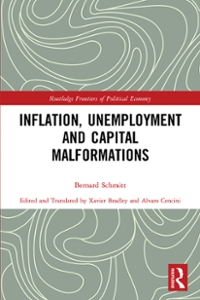Question
a) By Labor Economics theory, what are the short-run and long-run effects of immigration on the wages of native workers? Use diagrams to illustrate your
a) By Labor Economics theory, what are the short-run and long-run effects of immigration on the wages of native workers? Use diagrams to illustrate your arguments.
b) Describe the evidence of these effects presented
Theory at Work
THE INTIFADAH AND PALESTINIAN WAGES
Throughout much of the 1980s, nearly 110,000 Palestinians who resided in the occupied West Bank and Gaza Strip commuted to Israel for their jobs. Many of them were employed in the construction or agriculture industries.
As a result of the Intifadah that began in 1988?the Palestinian uprising against Israeli control of the West Bank and Gaza territories?there were major disruptions in the flow of those workers into Israel. Israeli authorities, for instance, stepped up spot checks of work permits and began to enforce the ban on Palestinians spending the night in Israel, while strikes and curfews in the occupied territories limited the mobility of commuting workers.
Within one year, the daily absenteeism rate jumped from less than 2 percent to more than 30 percent; the average number of work days in a month dropped from 22 to 17 days; and the length of time it took a commuting Palestinian to reach the work location rose from 30 minutes to three or four hours.
The Intifadah, therefore, greatly reduced the supply of Palestinian commuters in Israel. The supply and demand framework suggests that the uprising should have increased the equilibrium wage of the Palestinian commuters. And that's exactly what happened. The roughly 50 percent cut in the labor supply of Palestinian commuters increased their real wage by about 50 percent, implying that the labor demand elasticity for Palestinian commuters is about ?1.0.
Workers also gain. The supply curve gives the wage required to bribe additional workers into the labor market. In effect, the height of the supply curve at a given point measures the value of the marginal worker's time in alternative uses. The difference between what the worker receives (that is, the competitive wage w*) and the value of the worker's time outside the labor market gives the gains accruing to workers. This quantity is called worker surplus and is given by the area of the triangle Q.
The aggregate, the gains from trade, accruing to the economy is given by the sum of producer surplus and worker surplus, or the area P + Q. The competitive market maximizes the total gains from trade accruing to the economy. To see why, consider what the gains would be if firms hired more than E* workers, say EH. The "excess" workers have a value of marginal product that is less than their value of time elsewhere. These workers are not being efficiently used by the labor market; they are better off elsewhere. Similarly, consider what would happen if firms hired too few workers, say EL. The "missing" workers have a value of marginal product that exceeds their value of time elsewhere, and their resources would be more efficiently used if they worked.
The Labor Market Impact of Immigration
Because of major policy changes, the United States witnessed a major resurgence in immigration after 1965. In the 1950s, only about 250,000 immigrants entered the country annually. Since 2000, the annual inflow consists of over 1 million legal and illegal immigrants. These sizable supply shifts have reignited the debate over immigration policy.
There has also been an immigration surge in many other developed countries. According to the United Nations, 3.4 percent of the world's population (or about 258 million people) reside in a country where they were not born.17 By 2017, the fraction of foreigners in the country's population was 14.8 percent in Germany, 12.2 percent in France, 15.3 percent in the United States, 21.5 percent in Canada, and 29.6 percent in Switzerland. In many of these countries, the central issue in the immigration debate revolves around the impact of immigration on the employment opportunities of native-born workers.
The simplest model of the labor market impact of immigration starts by assuming that immigrants and natives are perfect substitutes in production. The two groups have the same types of skills and are competing for the same types of jobs. Figure 4-10a illustrates the impact of immigration in the short run, with capital held fixed. As immigrants enter the labor market, the supply curve shifts out, increasing total employment from N0 to E1 and reducing wages (from w0 to w1). Fewer native-born workers are willing to work at this lower wage, so the employment of native workers actually falls, from N0 to N1. In a sense, immigrants "take jobs away" from natives by reducing the wage and convincing some native workers that it is no longer worthwhile to work.
The Short-Run Impact of Immigration
(a) Perfect substitutes. The two groups compete in the same labor market. Immigration shifts the supply curve to the right. The wage falls from w0 to w1 and total employment increases from N0 to E1. The number of natives who work at the lower wage drops from N0 to N1. (b) Complements. The two groups do not compete in the same labor market. Immigration makes natives more productive, shifting up the demand curve even though capital is fixed. Both the native wage and native employment increase.
a)perfect substitutes



Step by Step Solution
There are 3 Steps involved in it
Step: 1

Get Instant Access to Expert-Tailored Solutions
See step-by-step solutions with expert insights and AI powered tools for academic success
Step: 2

Step: 3

Ace Your Homework with AI
Get the answers you need in no time with our AI-driven, step-by-step assistance
Get Started


